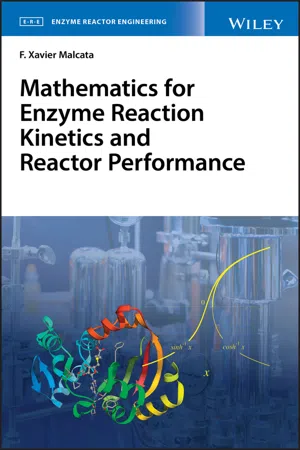Graphs of Exponents and Logarithms
Graphs of exponents and logarithms show the relationship between the base and the exponent or logarithm. Exponential graphs typically have a curved shape, while logarithmic graphs are characterized by a curve that approaches but never touches the x-axis. These graphs are useful for visualizing and understanding the behavior of exponential and logarithmic functions.
8 Key excerpts on "Graphs of Exponents and Logarithms"
- Craig Adam(Author)
- 2011(Publication Date)
- Wiley(Publisher)
...Before discussing some of these applications, the nature and meaning of these functions must be studied in some detail and the rules for their algebraic manipulation established. 3.1 Origin and definition of the exponential function The exponential and logarithmic (log) functions are based on the idea of representing a number as the power of another number called the base. The power itself is also sometimes called the index or exponent. So we can write the number, y, in terms of x and a base number, A, as: What number should we choose as the base and why should we wish to generate such functions anyway? The answer to the second part is that these functions turn out to have interesting properties, which we can apply and use to model real life situations. Our choice of base depends on what we wish to use these functions for. For example, let us set A = 10, as we work in a decimal system. This means that y (0) = 10 0 = 1, y (1) = 10 1 = 10 etc. We can evaluate this function for all real numbers, whether they are positive or negative. A graph of this function may be plotted, as shown in Figure 3.1. This reveals the characteristic “exponential” behaviour of a function that increases very rapidly, and increasingly so, as x gets larger. On the other hand, with a negative exponent the curve shows characteristic “decay” behaviour. Note that the exponential function of a real number never has a negative value. Figure 3.1 Graphs of functions y (x) = A x By choosing numbers other than 10 it turns out that we can produce similar functions. However, there is one special base that has the additional and very useful property that its rate of change – the tangential gradient at any point on the graph of the function – is equal to the value of the function at that point...
- eBook - ePub
- Mike Aitken, Bill Broadhurst, Stephen Hladky(Authors)
- 2009(Publication Date)
- Garland Science(Publisher)
...It is now very important to remember that the exponent can be any real number. To reflect this change in emphasis, but for no other reason, it is normal to call the exponent in the exponential function x rather than n. Graphs of the exponential functions y = a x with x ⩽ 0 are shown in Figure 3.7 for three special values of the base, a = 2, a = e ≈ 2.718, and a = 10. Exponential functions have the very important property that each time x is increased by the same amount, that is, the same amount is added, y is multiplied by the same factor. This behavior is called exponential growth. In Figure 3.7 for base 2, each time x increases by 1, y is multiplied by 2; for base 10, each time x increases by 1, y is multiplied by 10; for base e, each time the multiplication is by e. An important example of exponential growth is the early stage of bacterial growth when the bacteria are not crowded and the number present doubles at constant intervals called, not surprisingly, the doubling time. Figure 3.5 Plots of x n for the indicated values of n and x ⩽ 10. Figure 3.6 Plots of the n th root of y for the indicated values of n and y ⩽ 100. Figure 3.7 shows the exponential growth when the exponent is positive. Equally important is the exponential decay when the exponent is negative, y = a − x with x ⩽ 0 as in Figure 3.8. Now if x is increased by 1, for base 2, y is halved; for base 10, it is reduced 10-fold, that is, to 1/10th the value; and for base e it is reduced e -fold. Exponential decay is seen whenever the rate of loss of something is proportional to the amount remaining. Good examples are the radioactive decay of isotopes used as tracers and the decrease in concentrations of many drugs within the body sufficiently long after drug administration has stopped. Figure 3.7 Plots of exponential functions for positive exponents for three different bases...
- eBook - ePub
- Alan J. Cann(Author)
- 2013(Publication Date)
- Wiley(Publisher)
...Rule 1 – log a (x * y)=log a (x) + log a (y), i.e. you can multiply two numbers by adding their logarithms. 2. Rule 2 – log a (x/y) = log a (x) – log a (y), i.e. you can divide two numbers by subtracting their logarithms. 3. Rule 3 – log a (x) n = n log a (x), i.e. the logarithm of an exponent gives the original number. Remember the exponential function y = z x described in Section 6.2? When this function is plotted on semi-log graph paper (also called loglinear graph paper, where the y axis has a log rather than a linear scale), or if the log values of y are plotted, the log transformation of the exponential function results in the exponential curve being transformed into a straight line (Figure 6.2). Logarithms can be used to solve exponential equations which occur commonly in biology, e.g. pH: Figure 6.2 The log transformation of the exponential function results in the exponential curve being transformed into a straight line Human blood plasma has a typical H + concentration (written as ‘[H + ]’) of 10 −7.4 M. Therefore: Another example is the exponential growth of populations. The growth of a population is described by the equation: where N is the size of the population at time t; N 0 is the size of the original population; e is Euler’s number; and λ is the growth rate (as a decimal). During the growth phase of a bacterial culture, the rate of increase of cells is proportional to the number of bacteria present. The constant of proportionality, μ, is an index of the growth rate and is called the growth rate constant: The value of μ can be determined from the following equation: The natural logarithm of the number of cells at time t minus the natural logarithm of the number of cells at time zero (t 0) equals the growth rate constant multiplied by the time interval. For most purposes, it is easier to use log 10 values rather than natural logarithms...
- eBook - ePub
- Arsen Melkumian(Author)
- 2012(Publication Date)
- Routledge(Publisher)
...3 Exponential and logarithmic functions Logarithmic functions are indispensable in economic analysis as they can transform multiplicative relationships between economic variables into additive ones. In addition, economists often choose (for the sake of convenience) to optimize the natural log of an objective function instead of the objective function itself. Exponential functions are very useful when modeling the growth of a certain economic variable. For example, we can use exponential functions to model the growth of the population of a country. This chapter introduces logarithmic and exponential functions and closes with some Mathematica examples. 3.1 Logarithmic function Consider the following equation: In the equation above the base is equal to 3, and the exponent is equal to 5. The power to which 3 must be raised to yield 243 is called the logarithm (or log) to the base 3 of 243. So, logarithm to the base 3 of 243 is equal to 5: In general, if where a, B > 0 and a ≠ 1, and x ∈ ℝ, then we can write that For example, 2 5 = 32 implies that log to the base 2 of 32 equals 5 E XAMPLE 3.1 (a) log 2 1 = 0, since 2 raised to the power of 0 is 1. (b) log 7 7 = 1, since 7 raised to the power of 1 is 7. (c) log 10 = −1, since 10 raised to the power of −1 is. (d) log 3 81 = 4, since 3 raised to the power of 4 is 81. (e) log 5 (−25) is not defined, since −25 < 0. (f) log 12 1728 = 3, since 12 raised to the power of 3 is 1728. (g) log 5 = −2, since 5 needs to be raised to the power of −2 in order to get. Often economists work with logarithms to the base e, where e is the irrational number 2.718 … known as the exponential. Logarithms to the base e are referred to as natural logarithms. We can write either log e B or ln B to refer to the natural logarithm of B. Now, consider the function y = f (x) = ln x. The graph of y is given in Figure 3.1...
- eBook - ePub
- R. Stafford Johnson(Author)
- 2013(Publication Date)
- Bloomberg Press(Publisher)
...Appendix B Uses of Exponents and Logarithms Exponential Functions An exponential function is one whose independent variable is an exponent. For example: where: y = dependent variable t = independent variable b = base (b > 1) In calculus, many exponential functions use as their base the irrational number 2.71828, denoted by the symbol e: An exponential function that uses e as its base is defined as a natural exponential function. For example: These functions also can be expressed as: In calculus, natural exponential functions have the useful property of being their own derivative. In addition to this mathematical property, e also has a finance meaning. Specifically, e is equal to the future value (FV) of $1 compounded continuously for one period at a nominal interest rate (R) of 100 percent. To see e as a future value, consider the future value of an investment of A dollars invested at an annual nominal rate of R for t years, and compounded m times per year. That is: (B.1) If we let A = $1, t = one year, and R = 100 percent, then the FV would be: (B.2) If the investment is compounded one time (m = 1), then the value of the $1 at end of the year will be $2; if it is compounded twice (m = 2), the end-of-year value will be $2.25; if it is compounded 100 times (m = 100), then the value will be 2.7048138. As m becomes large, the FV approaches the value of $2.71828. Thus, in the limit: (B.3) If A dollars are invested instead of $1, and the investment is made for t years instead of one year, then given a 100 percent interest rate the future value after t years would be: (B.4) Finally, if the nominal interest rate is different than 100 percent, then the FV is: (B.5) To prove Equation (B.5), rewrite Equation (B.1) as follows: (B.6) If we invert R/m in the inner term, we get: (B.7) The inner term takes the same form as Equation (B.2). As shown earlier, this term, in turn, approaches e as m approaches infinity...
- eBook - ePub
- John Bird(Author)
- 2019(Publication Date)
- Routledge(Publisher)
...Chapter 9 Logarithms and exponential functions Why it is important to understand: Logarithms and exponential functions All types of engineers use natural and common logarithms. Chemical engineers use them to measure radioactive decay and pH solutions, both of which are measured on a logarithmic scale. The Richter scale which measures earthquake intensity is a logarithmic scale. Biomedical engineers use logarithms to measure cell decay and growth, and also to measure light intensity for bone mineral density measurements. In electrical engineering, a dB (decibel) scale is very useful for expressing attenuations in radio propagation and circuit gains, and logarithms are used for implementing arithmetic operations in digital circuits. Exponential functions are used in engineering, physics, biology and economics. There are many quantities that grow exponentially; some examples are population, compound interest and charge in a capacitor. With exponential growth, the rate of growth increases as time increases. We also have exponential decay; some examples are radioactive decay, atmospheric pressure, Newton’s law of cooling and linear expansion. Understanding and using logarithms and exponential functions is therefore important in many branches of science and engineering. At the end of this chapter, you should be able to: define base, power, exponent, index and logarithm distinguish between common and Napierian (i.e. hyperbolic or natural) logarithms state the laws of logarithms simplify logarithmic expressions solve equations involving logarithms solve indicial equations sketch graphs of log 10 x and log e x evaluate exponential functions using a calculator plot graphs of exponential functions evaluate Napierian logarithms using a calculator solve equations involving Napierian logarithms appreciate the many examples of laws of growth and decay in engineering and science perform calculations involving the laws of growth and decay Science and Mathematics for Engineering...
- eBook - ePub
Differentiating Instruction in Algebra 1
Ready-to-Use Activities for All Students (Grades 7-10)
- Kelli Jurek(Author)
- 2021(Publication Date)
- Routledge(Publisher)
...expressions, ➤ that exponential functions have a variable as the exponent, ➤ that exponential functions have growth and decay factors or multipliers, ➤ that exponential growth functions approach zero as x -values decrease, and ➤ that exponential decay functions approach zero as x -values increase. As a result of this unit, students will understand that: ➤ many real-life situations are modeled in exponential functions, and ➤ for an equation in the form of y = a (b) x, a represents the starting value, the value of b reflects either exponential decay or growth, and x is the time period. As a result of this unit, students will be able to: ➤ solve exponent functions and simplify expressions by applying the exponent rules; ➤ recognize and describe relationships in which variables grow and decay exponentially; ➤ describe how the values of a and b affect the graph of an equation in the form of y = a (b) x ; ➤ recognize exponential relationships in tables, graphs, and equations; and ➤. determine the growth and decay rates in exponential situations. Launch Scenarios ➤ After Erin graduated from college, she bought a house for $210,000. If it is estimated that real estate is appreciating in value by 5% per year, how much will the house be worth in 10 years when she plans to sell it? (Lesson 2) ➤ When Kevin's daughter is born, he and his wife invest $10,000 in an interest-bearing account for their daughter's education. If the account is earning 4% interest compounded quarterly, and no additional money is deposited into the account, how long will it take for the account to have $15,000? (Lesson 2) ➤ Katie bought a new car for $30,000. If its value is decreasing by 8% each year, how much will the truck be worth after 3 years? (Lesson 3) ➤ It is estimated that the human body can reduce caffeine in the bloodstream at a rate of 15% per hour...
- F. Xavier Malcata(Author)
- 2020(Publication Date)
- Wiley(Publisher)
...(2.15) after replacement of y by −y (since e −y is, by definition, 1/e y). A generalization of Eq. (2.15) reads (2.17) where x 1 = x 2 = ⋯ = x n = x readily implies (2.18) by virtue of the definition of multiplication as an iterated sum. Figure 2.2 Variation of (natural) (a) exponential, e x, and (b) logarithm, ln x, as a function of a real number, x. The inverse of the exponential is the logarithm of the same base, i.e. ln x for the case under scrutiny encompassing e as base; the corresponding plot is labeled as Fig. 2.2 b. A vertical asymptote, viz. (2.19) is apparent (the concept of limit will be explored in due course); the plot of ln x may be produced from that of e x in Fig. 2.2 a, via the rotational procedure referred to above. In terms of properties, one finds that (2.20) – so the logarithm converts a product to a sum; in fact, Eq. (2.20) is equivalent to (2.21) after taking exponentials of both sides, where Eq. (2.15) supports (2.22) – while the definition of inverse function, applied three times, allows one to get (2.23) as universal condition, thus guaranteeing validity of Eq. (2.20). If n factors x i are considered, then Eq. (2.20) becomes (2.24) should x 1 = x 2 = ⋯ = x n = x hold, then Eq. (2.24) simplifies to (2.25) If y is replaced by 1/ y in Eq. (2.20), then one eventually gets (2.26) – since ln { x / y } + ln y = ln { xy / y } = ln x as per Eq. (2.20), with isolation of ln { x / y } retrieving the above result; hence, a logarithm transforms a quotient into a difference. The concept of logarithm extends to bases other than e, say, (2.27) a ‐based exponentials may then be taken of both sides to get (2.28) – since a ‐based exponential and logarithm are inverse functions of each other. If b ‐based logarithms are taken of both sides, then Eq. (2.28) becomes (2.29) in agreement with Eq. (2.25) and after application to Eq. (2.28) – which may, in turn, be combined with Eq...







